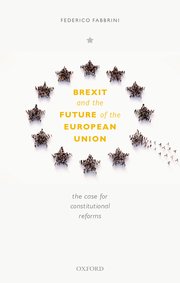POTENTIAL BREACH OF EUROPEAN AND INTERNATIONAL LAW
*Akshay Sharma and **Nivrati Gupta
The present state of collective bargaining in Ireland has hit record low. While collective bargaining is regarded as the mechanism of sharing prosperity and maintaining the balance of power between individuals interacting in a market, Ireland stands out as the only western-European EU member that does not have binding collective-bargaining legislation thus, leading to a low coverage of collective bargaining. On May 31st, Forsa Trade Union of Ireland published a report titled “Collective Benefit – Harnessing the power of representation for economic and social progress”, which stated that collective bargaining coverage in Ireland is at 33.5 percent, the second-lowest among the 14 countries in EU membership since before 2004. This blog post explores the international laws of collective bargaining that are applicable to Ireland and further, the reasons that can be attributed for their potential breach.
ILO convention and its applicability to Ireland
Ireland ratified the Right to Organize and Collective Bargaining Convention, 1949 (No. 98) in 1955. It is subject to constant supervision by the ILO on its compliance with this convention. As of now, it appears that Ireland is in breach of Article 4 of this convention that aims at encouraging voluntary negotiation between employers or employers’ organizations and workers’ organization through national policies, rules and regulations. There is one more convention called Collective Bargaining Convention, 1981 (No. 154) which defines collective bargaining and makes it mandatory for the Member States to take measures to improve the representation of the workers union. However, this convention is not ratified by Ireland.
However, it should be observed that Ireland has ratified Convention 87 on Freedom of Association, the ILO Committee on Freedom of Association (which is empowered to make binding determinations on the requirements of ILO conventions under its purview) has held that the right to bargain freely with the employer is an essential element of freedom of association.
Without this indispensable element of bargaining freely, the whole aim of forming an association might get defeated. Even though Ireland is obligated to comply with convention 87, the present situation is in stark contrast with the bare minimum expectations of the instrument. Presently, Ireland is performing below the EU average in respect of industrial democracy and associational governance which brings Ireland near the bottom on worker representation and participation in economic decision-making.
There are two more recommendations of ILO (recommendation NO. 91and No. 163) that aims at forming policies and implementing them for instituting principles, operations and practices of collective bargaining. However, they are only recommendations and there is no mandate to implement them. The right to bargain collectively cannot be brought to its realization if the laws of a country leave it entirely up to employers whether or not to recognize and negotiate with workers’ trade unions.
The laws of the European Union
Ireland is subjected to the European Convention on Human Rights that recognizes freedom of association under Article 11. The right of collective action was recognized by the European Court of Human Rights as one of the elements of trade union rights laid down by Article 11 of the ECHR. Further, collective bargaining as an essential element of Article 11 is observed in the landmark judgments of the European Court of Human Rights like Demir and Baykara v Turkey. The court observed that though, indulging in collective bargaining might not be a statutory mandate for an employer in Ireland, but if a generally applicable practice in the field of collective bargaining is shared throughout Europe, such practice regarding collective bargaining may be binding on contracting and even non-contracting states that do not follow those practices.
Ireland ratified the European Social Charter in 1964 and the Revised European Social Charter in the year 2000, accepting 92 of the 98 paragraphs of the Revised Charter. Article 6 of the European Social Charter mentions the right to bargain collectively, Ireland has duly accepted and ratified all the four provisions of Article 6 of the Revised European Social Charter. In the landmark case of ICTU v. Ireland, the European Committee of Social Rights clarified the relationship between the values of unrestricted trade and competition and those of freedom of association and collective bargaining. the European Committee of Social Rights held that Article 6(2) of the European Social Charter on the right to collective bargaining applies to self-employed persons, restrictions based on competition law or commercial law are not legitimate and/or are not necessary for a democratic society and also violated the European Social Charter.
The ECSR further pointed out that the restrictions on trade practices cannot go parallel to a democratic society. Unrestricted trade and fair competition are highly regarded principles that benefit consumers in several different ways. This should not, however, prevent specific groups of self-employed people in specific jobs from exercising their collective bargaining rights.
To establish a free and democratic society, it is important to have the opinion of every individual getting voiced in the society. Without principles of representations, we cannot make sure that the policies, rules, and regulations that are expected to hold the fabric of society together have taken into consideration every opinion of every individual.
Article 28 of the EU Charter of Fundamental Rights which is based on Article 6 of the European Social Charter grants the right of collective bargaining and action to workers, employers or their respective organizations. However, its compliance is not evident in Ireland. The main reason that can be attributed to this unrealized breach is that there is no obligation on the part of the employer to engage in a bargaining process with the employees. This weakens the industrial relations machinery and thus, there is no incentive for workers to involve in a negotiating process.
 from: https://www.eurofound.europa.eu/topic/collective-bargaining
from: https://www.eurofound.europa.eu/topic/collective-bargaining
Reasons for low coverage of collective bargaining in Ireland
The report attributes this relatively low rate to the effects of the financial crisis, a series of court decisions striking down certain industrial relations laws as unconstitutional, and the voluntarist tradition of industrial relations in Ireland. The report contends that there are not any legal obligations on the government to engage itself in any kind of collective bargaining. The whole process is based on the will of the parties.
In the recent case Náisiúnta Leictreach Contraitheoi rÉireann v Labour Court, the High court made two imperative observations. First that the specific SEO for the electrical contracting industry was ultra vires the Industrial Relations (Amendment) Act 2015 because of procedural flaws in its adoption and secondly that this2015 Act was unconstitutional, again as an impermissible delegation of legislative power. A ‘sectoral employment order’ (SEO) aims to set out minimum pay rates as well as pension and sick pay schemes for a specific economic sector. The court concerning how an SEO is issued observed that the delegation of legislative power cannot be provided to any branch other than legislative. The labour court is entitled to decide if there are fair and sufficient grounds upon which the minister can issue an SEO and based on that the court makes recommendations to the minister to issue the order. This decision exposed some contradictions of the Industrial Relations (Amendment) Act 2015and the process of issuing SEO. The first one is that the power to decide if sufficient and fairgrounds for issuing SEO rests with labour court and not minister, which is a trespass of power of the legislation by the different branch of government (judiciary). The second contradiction is that collective bargaining in Ireland is of a voluntarist nature and thus, an order cannot mandate an organization or company to do something. This decision though in an appeal is subject to criticism but whatever the means was for issuing an order, it somehow guaranteed the fulfilment of fair demands of the workers.
Furthermore, even the constitution of Ireland does not recognize the right to collective bargaining and the courts have repeatedly declined to recognize a constitutional obligation on employers to recognize or bargain with trade unions. The Supreme Court went so far as to suggest in Ryanair v Labour Court that employers may even enjoy a constitutional ‘right to operate a non-unionized company. Without any overarching framework or protection, there might be a possibility that the policies and legislation specific to the cause of worker’s representation may not function properly and this is what is happening in Ireland right now.
Without any mandating legislation, the principle of collective bargaining is nothing but a toothless tiger. The whole purpose of establishing a trade union is to negotiate with the employer for the bare minimum standards of work and living. But with the sheer disregard of international law and no efforts to improve the situation, the government is giving green light to the corporate entities to give a cold shoulder to the demands of workers.
Conclusion
There are all-inclusive international labour laws and laws of the European Union that aim towards the cause of collective bargaining, but looking at the present state of Ireland with regards to collective bargaining, it appears that there might be a potential breach of the above-mentioned instruments and consequently international laws. The Minister for Enterprise, Trade and Employment Leo Varadkarhas has set up a high-level working group (expected to provide a report by July 2021) that is devoted to finding out issues, implications, legal and constitutional impediments, and review collective bargaining and industrial relations in Ireland. Further, the group will provide recommendations for expanding the coverage of the same. Ireland needs to take measures like strict implementation of EU laws and enacting mandating legislation on collective bargaining. Steps should be taken not only for preventing Ireland from any potential breach and consequential penal actions, but also because at the end of the day, it is the workers whose fair demands of wage parity, workplace democracy, and stable life are getting curtailed.
*Akshay Sharma: Akshay Sharma is a penultimate year LLB Honours student of a 5-year integrated law degree program at Institute of Law Nirma University with a keen interest in Public International Law. In the future, Akshay plans to pursue his Masters in the same.
**Nivrati Gupta: Nivrati Gupta is a penultimate year B.Com LLB Honours student of a 5 year integrated law graduate course at Institute of Law, Nirma University, India.










